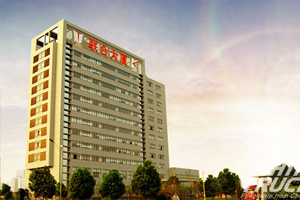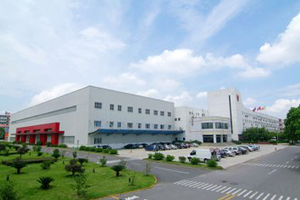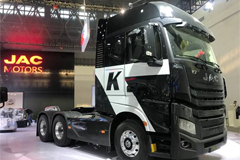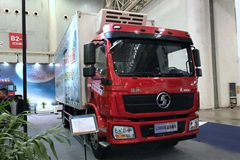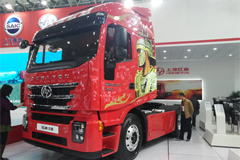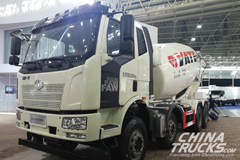China's logistics industry at the crossroads
To borrow a well-worn clich, this is the worst of times and the best of times for China's logistics industry.
Rising fuel and labor costs are cutting deep into the earnings of many transportation companies, their problems compounded by falling demand because of the slowdown in export growth.
 |
But the increasingly complex export trade pattern, leaning more toward small orders and quick turnaround time for higher-value-added goods, is creating a strong demand for sophisticated, high-profit logistics services that involve inventory control and timely delivery of parts and components.
Industry experts predict that escalating costs will force the logistics industry into a massive restructuring. In the process, many smaller and weaker companies will either close or get absorbed by the bigger players to form large entities with the financial resources and operational expertise to offer a variety of high-value-added services.
Battling through
With energy costs persistently on the rise and mounting inflationary pressures, China"s logistics sector is suffering a steady fall in profit margins that may herald a possible reversal of the past decade's growth momentum.
Gone are the days when a transportation company with only 20 people and half a dozen trucks could make 2 to 3 million yuan a year. The average profit margin of the transportation sector, according to statistics of China Federation of Logistics and Purchasing (CFLP), has been squeezed to no more than 2 to 3 percent, plunging as quickly as oil prices surge.
In a move to ensure oil supplies, China raised diesel and gasoline prices by 18 percent last month, the first such increase in eight months and the biggest ever. It means, however, that fuel spend has been driven to reach 40 percent of the total transportation costs, forcing major transportation agents to the verge of bankruptcy. Industry insiders say their profit margin is likely to be squeezed further as overall operational costs continue to surge.
Take the express delivery market for example: many domestic couriers have reported net losses and are struggling to make ends meet. Amid the tens of thousands of local competitors offering increasingly lower charges, domestic delivery companies are also battling leading foreign couriers who are also shedding their prices progressively to secure a slice of the big market pie.
 |
Deteriorating US demand and the slowdown in the world economy has further dented the industry"s outlook, as China's export sector is noticeably down with a slackened growth rate and disturbing implications for the logistics sector.
China's trade surplus in the first half of this year fell 11.8 percent to $99 billion from a year ago amid declines in international trade growth triggered by the global economic slowdown as well as the government's efforts to curb exports of resource-intensive and heavily polluting products. For related logistics service providers, the impact has been acute.
"We've suffered a 10 to 20 percent decrease in sales revenue in the first half of this year amid the export slump," says Chu Zhenzhong from the marketing department of CTS, a Shanghai-based sea freight forwarder. The company has also had to deal with rising currency risks, with a steady yuan appreciation, he said.
For Tom Song, vice-director at the marketing department of Shanghai Pudong Trucking Corporation, the continuous export plunge has induced a higher vacancy rate for his company's fleet, recently hitting 15 percent. The average vacancy rate of truck runners in China, according to industry insiders, has reached about 40 percent.
"What complicates the situation is that there have been frequent adjustments in clients' orders given the growing uncertainty in the export sector, and our sales revenue has in turn dropped by 8 percent," Song says.
As a labor-intensive sector, logistics companies have yet to cope with escalating labor costs, with the current inflation malaise making everything a lot more expensive than before. "Labor costs constitute 30 percent of the overall costs of a transportation company like us. The 10 percent surge in wages has further undermined our earnings," Song says.
The concern over a possible slowdown in the industry is echoed by experts who estimate the average gross profit of China's logistics industry has fallen from 30 percent in 2002 to less than 10 percent in 2007, says An Jianghong, analyst from Anbound Group, a consulting firm headquartered in Beijing.
Pushed by surging costs and sliding profits, many small and medium-sized logistics companies will face mergers and acquisitions as they find it increasingly difficult to meet the demand for higher-value-added services and transfer their losses, An says.
New demand
While these economic uncertainties may bode ill for the development of the logistics industry, CFLP still projects the sectors growth rate this year will be around 20 percent, compared with last year's 18.2 percent, based on the growing demand for high-efficiency supply chain management from many manufacturing enterprises seeking ways to reduce costs.
"Through logistics service outsourcing, manufacturing companies can be saved from excessive investment in non-core business sectors and will be able to focus on their product designs to build up competitiveness," says Chu Xuejian, vice-chairman of Shanghai Logistics Society.
"As the profit margins of the traditional logistics sectors like transportation and warehouse services keep plummeting, one-stop supply chain management and other value-added services have become the new profit engines that will bolster the industry's development," Chu says.
 |
Statistics from CFLP show that while the growth rate of traditional transportation enterprises in 2006 was only 10.7 percent, integrated logistics service providers grew by a far wider margin, exceeding 30 percent.
"Motivated by the need to reduce stocks and costs, more and more enterprise are recognizing the need for optimal supply chain management, especially if they have more than 100 suppliers and have to deal with mounting management costs," says Xie Jianmin, director of the marketing department of PGLogistics, a leading supply chain service operator based in Guangzhou.
By stepping into the planning and designing spheres of a company"s supply chain management, covering purchasing and manufacturing to information and other distribution processing services, PGLogistics is geared toward meeting the new market demand for highly integrated and efficient supply chain solutions, Xie says.
"Although the current market share of one-stop, third-party logistics outsourcing in China is only 2 percent, the trend is quite obvious as about 42.6 percent of enterprises chose to outsource at least a part of their logistics services in 2006, compared with 37 percent in 2005."
One obvious advantage with such integrated logistics service providers is that they have a greater chance of shielding against the impact of volatile oil prices, says Bao Wenqing, director of the marketing department of the Shenzhen-based Eternal Asia Supply Chain Management Ltd (EA). It's a professional supply chain solution provider offering one-stop supply chain services for some of the world's top 500 companies like GE, IBM and Philips.
Sales revenue from energy-sensitive logistics services takes up less than 10 percent of the company's revenues, Bao says. But Chinese manufacturing companies still have a long way to go before they can fully realize the significance of efficient supply chain management, he adds. Bao says there is noticeable lack of cooperation between Chinese manufacturing and logistics companies, which has severely hindered the development of the logistics outsourcing industry.
But not all are bent on becoming bigger. Specialized logistics services that cater to the needs of individual sectors are also seeing a boom in China, driven by the demand for professional services.
Chen Fule, project manager of Dajin Logistics Group responsible for chemicals and dangerous-goods logistics business, is optimistic about the industry's outlook. "It's very difficult now to qualify for logistics services in chemicals and dangerous goods. In Shanghai there are only about 100 companies engaged in the sector, far below the market demand."
Shanghai Pudong Trucking Corporation, too, has ventured into other business lines like cold chain and auto parts logistics, the sales revenue of which have recently grown to about half of its turnover.
Chu from China Logistics Society, however, remains cautious of the challenges ahead. China's logistics industry still lags far behind the global standard in terms of service quality and technological innovations, he says, adding the operational costs of China's logistics enterprises are three or even four times more than their foreign counterparts.
"In the future, information technology would be the key to propelling the development of the logistics industry in China," Chu says.
Views:0
- ZF Breaks Ground on Its Fourth R&D Centre in China 2022-03-25
- GAUSSIN Enters China, the Largest Truck Market in the World 2022-02-24
- China's Truck Export in 2021 Reached a 10-year Peak 2022-02-15
- ZF Marks 40th Year in China 2021-11-19
- China Premier: VOLVO Trucks To-Be-Locally-Produced Flagship Model FH 2021-11-09
- Heishan Fleet Selects Tonly Mining Trucks with Allison 4800 ORS Transmission 2021-11-08
- Beiben Exhibited Full Electric Tractor Head at China Manufacturing Expo 2021-10-25
- Volvo Trucks Acquires Heavy-duty Truck Manufacturing Operation in China 2021-08-24
- Jiefang's Engine Export Up 56% in the Fist Six Months 2021-06-30
- More than 2,800 Exhibitors to Participate in Bauma CHINA 2020-11-18
Submit Your Requirements, We Are Always At Your Service.
- BYD Stopped the Production of Fuel Vehicles
- Geely Began Test Runs of Green E-methanol Vehicles in Danmark
- 2022 SANY Global Dealer Summit Was Held Successfully Online
- BYD and Shell Partner on EV Charging across China and Europe
- Daimler Truck Significantly Increase Sales, Revenue and Net Profit in 2021
- Scania Year-end Report January-December 2021
- Hyundai Motor and Iveco Group Sign MOU to Explore Future Collaboration
- GAUSSIN Enters China, the Largest Truck Market in the World
- Over 1,200 Hydrogen-powered Vehicles Deployed for the Beijing Winter Olympics
- Chinese New Year Holiday Closure Notice
- China's Truck Exports Grew by 30% YOY to 63490 Units in January-February
- China's New Energy Heavy Trucks Grew Despite an Overall Slump
- Heavy-duty Truck sales in China Fell by 54% to 54,000 units in February
- SINOTRUK Achieves Sales of 27,725 Vehicles in January, 2022
- China’s Domestic Tractor Sales Exceed 40,000 Units in January
- 2021 JAC International Pickup Export Performance
- JAC Achieved a Great Result in 2021
- China's Truck Export in 2021 Reached a 10-year Peak
- Heavy-duty Truck Sales in China Fall 57 Percent on Year in January
- China Recorded Sales of 645000 Tractors in 2021


